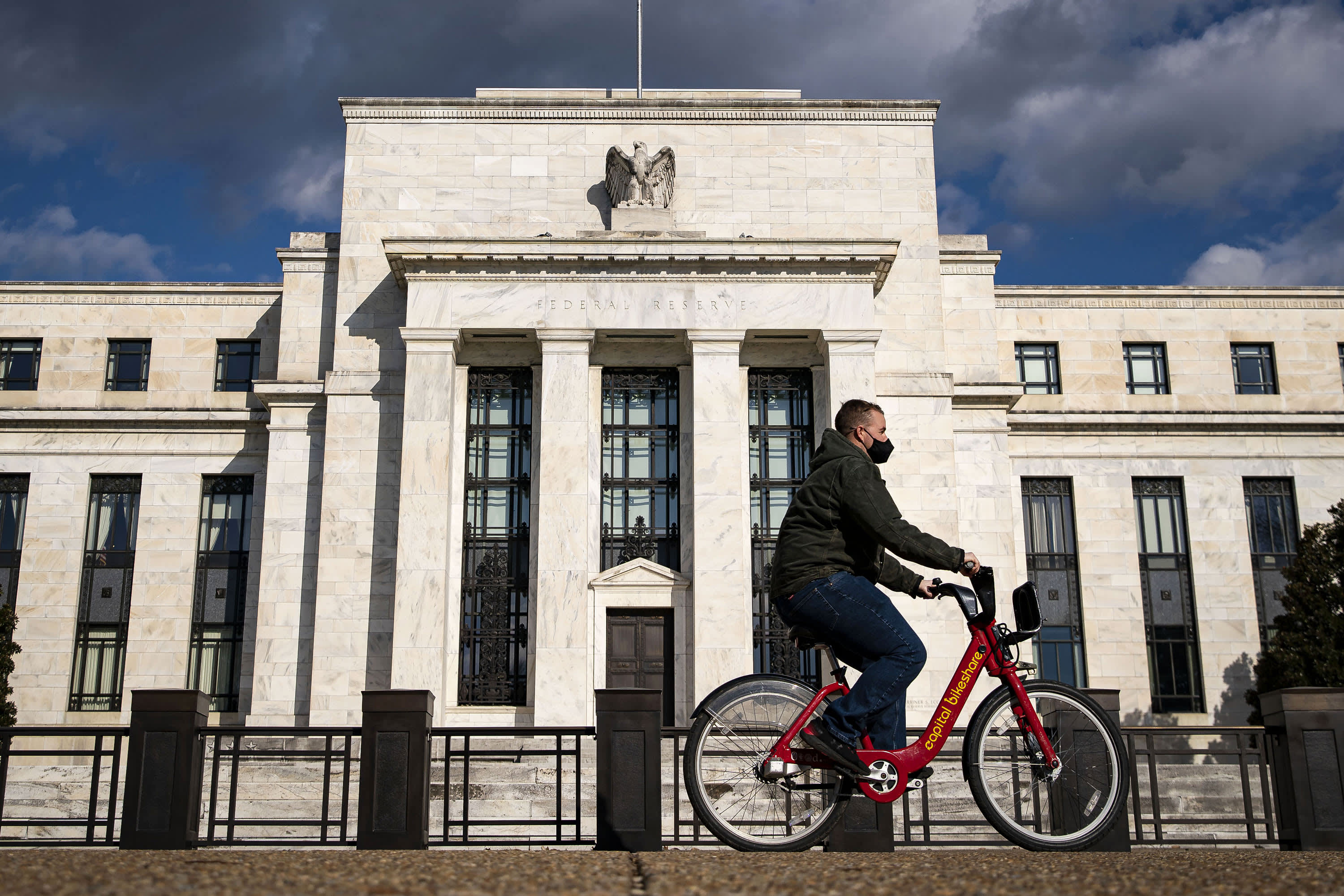
The Federal Reserve left interest rates unchanged at its April meeting Wednesday.
Here's what experts are watching now.
David Kelly, chief global strategist at JPMorgan Asset Management, is monitoring potential asset bubbles.
"I think it's a little stickier than they think because I think you'll see a lot of wage growth here over the next year. These labor markets are tightening very fast here, and I think that's going to push up wages. So that's more than just transitory, but I think the other issue here is asset prices, because we've seen stock prices go up 6% just since the last Fed meeting six weeks ago. And the problem is that this very low level of interest rates is really feeding asset bubbles too, and I think the Fed really needs to think about that. It shouldn't just be about inflation of goods and services. There are other downsides to having money this easy when the economy's doing this well."
Mona Mahajan, senior U.S. investment strategist at Allianz Global Investors, predicts higher rates and inflation expectations ahead.
"Certainly what we've seen over the last few weeks has been the 10-year Treasury, for example, came from 1.75% down back to 1.55%. We're starting to see that grind back higher. I do think that trend could continue especially as we get the announcement of additional stimulus, the reopening of the economy in really true form this summer months, and then of course, the Fed if it does commit to remaining on the sidelines for the quarters or in the foreseeable future in the next one to two quarters, that really is a good backdrop for inflationary expectations to rise and for rates to start to rise again."
Julia Coronado, founder of MacroPolicy Perspectives, is watching for a difference between transitory and persistent inflation.
"There's a difference between inflation, which is year-after-year increases in prices, and a one-time pass-through of supply chain pressures, which we do expect to see some of and the Fed expects to see some of. But if you're going to see prices rise year after year after year, that's inflation. That tends to have to be not just supply-chain driven or commodities-driven but a broad-based phenomenon that comes with broad-based wage gains. So that's the more salient question for the Fed in terms of thinking about inflation."
Subadra Rajappa, head of U.S. rates strategy at Societe Generale, is closely monitoring the Treasury Inflation Protected Securities, or TIPS, market.
"The higher inflation is being borne out very clearly in the inflation expectations market, i.e., the TIPS market, where 10-year breakevens, for instance, are above 2.40% right now. It's really the highest level inflation breakevens have been in the last decade. Yes, 10-year yields are still quite low on an outright basis, just about 1.60% right now. But, you know, a lot of the recent rally, what was interesting in the bond market is the rally was entirely driven by a decline in real yields and inflation breakevens actually widened."
Brian Belski, chief investment strategist at BMO Capital Markets, says not enough attention has been paid to rates rolling over.
"Remember during the climb to 2% everybody thought we're going to go to 2% and beyond when the momentum was clearly in that direction. But a funny thing happened, bond yields rolled over. I think it's one of these stories that people are not paying enough attention to, and if we just still think that the Fed's primary concern absolutely, positively is Covid-19/coronavirus and in the return to normalcy, and so we would say, Covid over employment and employment over inflation."
Rick Rieder, global CIO of fixed income at BlackRock, says there may be too much liquidity in the markets right now.
"I think they could start hinting that they could start reducing the tapering program. Right now the amount of liquidity that's going into the system is extraordinary. Quite frankly, the system is too flush with liquidity, because not only are you getting $120 billion a month in from the Fed, but what's happening from Treasury now is you're getting this immense amount of money coming in."
Richard Fisher, former Fed president, sees price pressures stemming from the increased demand.
"Well, we obviously have a booming demand, particularly these people going back to work, and we have supply side crimpages. We're going to see price pressures, it's across the spectrum. The real issue for the Fed, for the central bank, is whether or not this is going to be a transitory thing or becomes embedded and repetitive."
Jim Paulsen, Leuthold Group chief investment strategist, says runaway inflation could spell the end of the market rally.
"I'm not convinced either way that we're going to have runaway inflation or we're not going to have. I'm not so worried about a burst of inflation, which we are going to have. We're in the midst of that now. I'm more concerned about sustained inflation, and I think that's still a real risk that could prematurely end this recovery and its bull market."
"What" - Google News
April 29, 2021 at 05:37AM
https://ift.tt/2S3i0OC
The Fed leaves rates unchanged – Here's what experts are watching now - CNBC
"What" - Google News
https://ift.tt/3aVokM1
https://ift.tt/2Wij67R
Bagikan Berita Ini














0 Response to "The Fed leaves rates unchanged – Here's what experts are watching now - CNBC"
Post a Comment